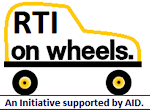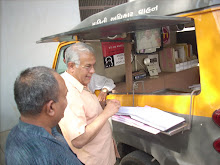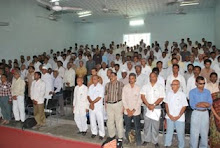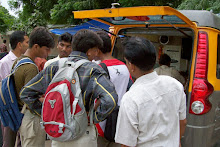Times of India: Mumbai: Sunday, 2 February 2025.
Globally, February 2 is observed as Wetlands Day and everybody will continue to talk about the importance of wetlands. We will have all ministers and officials stressing the importance of preserving our wetlands as sources of water for drinking and irrigation, sustainability, maintaining ecological balance and above all as carbon sinks and natural sponges that absorb excess water be it the floods or high tides.
Yet, sadly though, what the government does on ground is precious little. It is not an exaggeration that the protection and conservation of wetlands and mangroves is caught in bureaucratic maze.
Sample this: As per the National Wetlands Atlas of the Union Ministry of Environment, Forest and Climate Change (MOFCC), there are over 7,57,040 wetlands in the country. Of these, 2,00,205 wetlands, each of which are above 2.25 hectares, are considered as major wetlands.
Following the identification by the National Atlas, the wetlands are supposed to be listed and then notified as wetlands for protection and conservation. Till then, the water bodies do not get any legal protection and hence are open to landfill, reclamation and development of concrete jungles on them. It is this process that is caught in the bureaucratic web.
The MOEFCC has informed in response to a series of applications under the Right To Information (RTI) Act that water being a state subject, it is for the state wetland authorities to take care of the wetlands. Thus, just about 1,307 wetlands are notified pan-India. That is how the government is preserving our wetlands which are described by Prime Minister Narendra Modi as our Amrit Dharohar! Coming to Maharashtra, the Atlas shows over 4,500 wetlands.
As per official information obtained again via the RTI route, the documentation work of just 564 wetlands, has been completed as of December 2024. The job of documentation assigned to the Chennai-based National Centre for Sustainable Coastal Management (NCSCM) is ongoing and the state government has not indicated any deadline for completing this. Ideally, the work is supposed to be done with the help of the State government’s machinery – the district collectors and the tahsildars.
The Supreme Court has recently mandated the States to finish the process of demarcating the major wetlands that are over 2.25 hectares each.
Will the Maharashtra government be able to meet the deadline?
It is a million-dollar question! Let me present a case study involving city planners such as CIDCO in a denial mode as far as environmental care and wetlands protection are concerned. In a CIDCO-mandated survey, the BNHS has identified several wetlands in Navi Mumbai which are home to hundreds of species of migratory and local birds and hence needed to be protected. This is also important for the safety of flights at the upcoming Navi Mumbai International Airport (NMIA).
To put it simply, the birds which are habituated to these wetlands will go helter-skelter and land on the high grounds of the airport area if they miss the water bodies. Remember, even one bird strike is enough to cause crash landing of an aircraft. Here, BNHS is taking about thousands of birds. Further, the Mangrove Cell has also expressed keenness to protect five of the major wetlands Belpada, Bhendkhal and Panje in Uran and NRI and TS Chanakya in Nerul - under the Wildlife Protection Act.
CIDCO brushed aside the suggestion saying these are not wetlands but developable land parcels as they were originally farm lands or salt pans. What is more, based on a CIDCO certificate, the Maharashtra Coastal Zone Management Authority (MCZMA) has even given its CRZ nod for a golf course project on NRI and TS Chanakya wetlands. But subsequently, the MOEFCC has clarified to us that CIDCO is not the right authority for certifying or verifying wetlands.
Does MCZMA or the Wetland Authority listen?
As regards wetland status, the MCZMA does not even refer the issue to the State Wetland Authority nor does the authority do any ground check and goes by documents presented to it before issuing any CRZ permissions. This is one of the reasons for hundreds of applicants presenting fake certificates for CRZ permissions and getting away with the racket.
Fortunately, a Bombay High Court SIT probe unearthed the massive racket. Getting back to Navi Mumbai wetlands, the Adani Airports, in its Environment Impact Assessment of NMIA, has clearly mentioned that the wetlands as listed by the BNHS will be protected and that even the golf course project is cancelled.
Let us not forget the fact that the Navi Mumbai Airport is being developed by CIDCO and Adani Airports is only a builder and operator. Yet CIDCO remains in a denial mode on wetlands. Following a spate of flamingo deaths last year around DPS Flamingo Lake at Nerul in Navi Mumbai, the state government has appointed a high-level committee headed by none other than the Forest Secretary B Venugopal Reddy to suggest ways to safeguard the wetland. One key recommendation is that the DPS lake should be protected as a Conservation Reserve and that two major intertidal water inlets to the lake must be kept open. But CIDCO continues to block the water channels and get away with blue murder. Accountability does not exist in the state government’s dictionary.
Globally, February 2 is observed as Wetlands Day and everybody will continue to talk about the importance of wetlands. We will have all ministers and officials stressing the importance of preserving our wetlands as sources of water for drinking and irrigation, sustainability, maintaining ecological balance and above all as carbon sinks and natural sponges that absorb excess water be it the floods or high tides.
Yet, sadly though, what the government does on ground is precious little. It is not an exaggeration that the protection and conservation of wetlands and mangroves is caught in bureaucratic maze.
Sample this: As per the National Wetlands Atlas of the Union Ministry of Environment, Forest and Climate Change (MOFCC), there are over 7,57,040 wetlands in the country. Of these, 2,00,205 wetlands, each of which are above 2.25 hectares, are considered as major wetlands.
Following the identification by the National Atlas, the wetlands are supposed to be listed and then notified as wetlands for protection and conservation. Till then, the water bodies do not get any legal protection and hence are open to landfill, reclamation and development of concrete jungles on them. It is this process that is caught in the bureaucratic web.
The MOEFCC has informed in response to a series of applications under the Right To Information (RTI) Act that water being a state subject, it is for the state wetland authorities to take care of the wetlands. Thus, just about 1,307 wetlands are notified pan-India. That is how the government is preserving our wetlands which are described by Prime Minister Narendra Modi as our Amrit Dharohar! Coming to Maharashtra, the Atlas shows over 4,500 wetlands.
As per official information obtained again via the RTI route, the documentation work of just 564 wetlands, has been completed as of December 2024. The job of documentation assigned to the Chennai-based National Centre for Sustainable Coastal Management (NCSCM) is ongoing and the state government has not indicated any deadline for completing this. Ideally, the work is supposed to be done with the help of the State government’s machinery – the district collectors and the tahsildars.
The Supreme Court has recently mandated the States to finish the process of demarcating the major wetlands that are over 2.25 hectares each.
Will the Maharashtra government be able to meet the deadline?
It is a million-dollar question! Let me present a case study involving city planners such as CIDCO in a denial mode as far as environmental care and wetlands protection are concerned. In a CIDCO-mandated survey, the BNHS has identified several wetlands in Navi Mumbai which are home to hundreds of species of migratory and local birds and hence needed to be protected. This is also important for the safety of flights at the upcoming Navi Mumbai International Airport (NMIA).
To put it simply, the birds which are habituated to these wetlands will go helter-skelter and land on the high grounds of the airport area if they miss the water bodies. Remember, even one bird strike is enough to cause crash landing of an aircraft. Here, BNHS is taking about thousands of birds. Further, the Mangrove Cell has also expressed keenness to protect five of the major wetlands Belpada, Bhendkhal and Panje in Uran and NRI and TS Chanakya in Nerul - under the Wildlife Protection Act.
CIDCO brushed aside the suggestion saying these are not wetlands but developable land parcels as they were originally farm lands or salt pans. What is more, based on a CIDCO certificate, the Maharashtra Coastal Zone Management Authority (MCZMA) has even given its CRZ nod for a golf course project on NRI and TS Chanakya wetlands. But subsequently, the MOEFCC has clarified to us that CIDCO is not the right authority for certifying or verifying wetlands.
Does MCZMA or the Wetland Authority listen?
As regards wetland status, the MCZMA does not even refer the issue to the State Wetland Authority nor does the authority do any ground check and goes by documents presented to it before issuing any CRZ permissions. This is one of the reasons for hundreds of applicants presenting fake certificates for CRZ permissions and getting away with the racket.
Fortunately, a Bombay High Court SIT probe unearthed the massive racket. Getting back to Navi Mumbai wetlands, the Adani Airports, in its Environment Impact Assessment of NMIA, has clearly mentioned that the wetlands as listed by the BNHS will be protected and that even the golf course project is cancelled.
Let us not forget the fact that the Navi Mumbai Airport is being developed by CIDCO and Adani Airports is only a builder and operator. Yet CIDCO remains in a denial mode on wetlands. Following a spate of flamingo deaths last year around DPS Flamingo Lake at Nerul in Navi Mumbai, the state government has appointed a high-level committee headed by none other than the Forest Secretary B Venugopal Reddy to suggest ways to safeguard the wetland. One key recommendation is that the DPS lake should be protected as a Conservation Reserve and that two major intertidal water inlets to the lake must be kept open. But CIDCO continues to block the water channels and get away with blue murder. Accountability does not exist in the state government’s dictionary.















































































